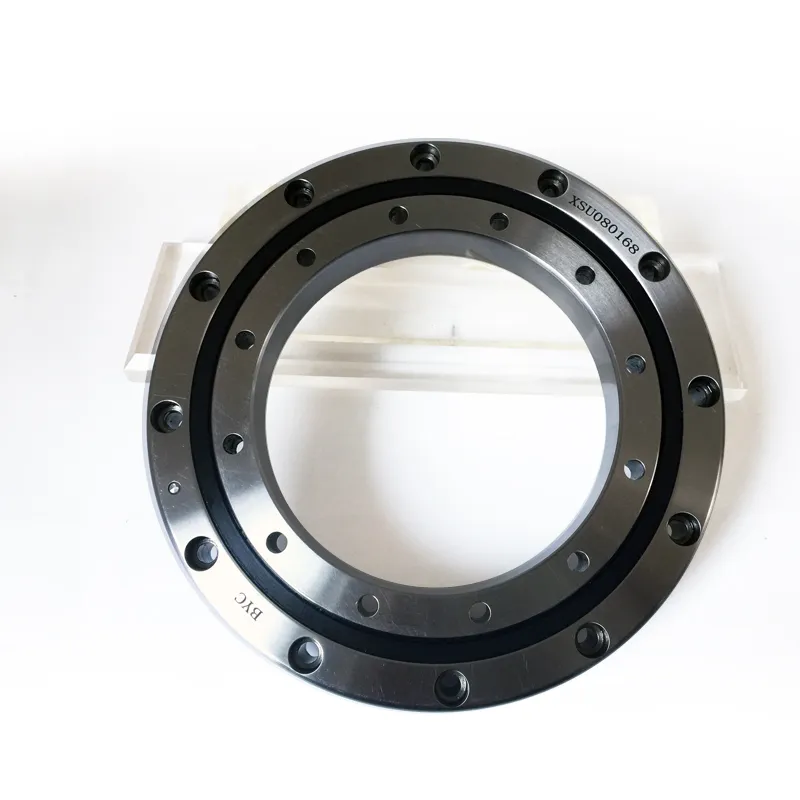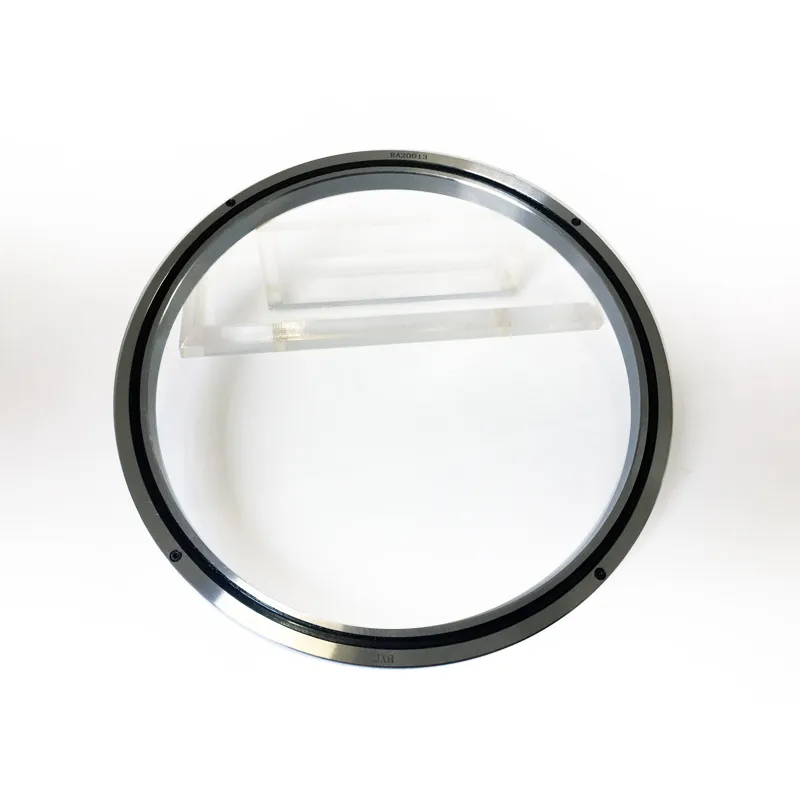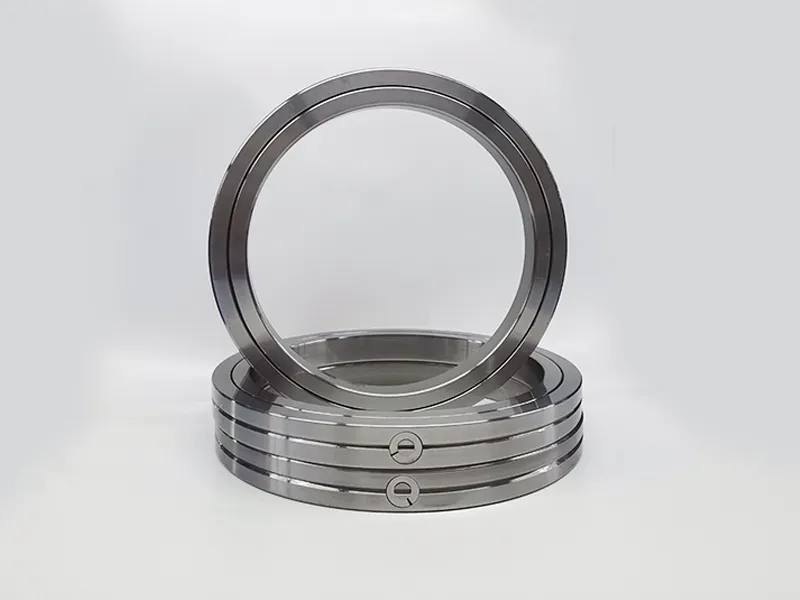Crossed roller bearings are a type of precision bearings designed for applications that require high rotational accuracy and stiffness, with the ability to handle both radial and axial loads. The production process of crossed roller bearings involves several key steps. While the exact details can vary among manufacturers, the following is a general overview of the production process.
Crossed roller bearing production process

Material Selection
-
High-quality materials, typically bearing steel, are chosen for the inner and outer rings, rollers, and other components. The specific alloy composition and heat treatment are critical to achieving the desired mechanical properties.
Forging and Heat Treatment
-
The selected materials undergo a forging process to form rough shapes of the inner and outer rings. Subsequently, heat treatment is applied to enhance the hardness, strength, and wear resistance of the components.
Machining Inner and Outer Rings
-
The forged rings undergo precision machining to achieve the final dimensions, smooth surfaces, and accurate geometries required for optimal performance. This step includes processes such as turning, grinding, and honing.
Roller Production
-
Rollers are manufactured separately, often through a precision machining process, to ensure uniform size and shape. Heat treatment is applied to achieve the desired hardness.
Cage Assembly
-
The cage, which holds the rollers in place, is assembled. Depending on the design, cages can be made of various materials, including steel or synthetic materials. The cage is designed to allow free rotation of the rollers while maintaining proper spacing.
Assembly of Inner and Outer Rings with Rollers and Cage
-
The inner and outer rings are assembled with the rollers and cage, creating the basic structure of the crossed roller bearing. Precision is crucial at this stage to ensure smooth rotation and minimal friction.
Sealing (Optional)
-
In some applications, crossed roller bearings may include seals to protect against contamination and retain lubrication. Seals are added as needed during the assembly process.
Lubrication
-
The bearings are lubricated with high-quality grease or oil to reduce friction, dissipate heat, and prolong the bearing's life. Lubrication may be performed during assembly or as a separate step in the manufacturing process.
Quality Control and Inspection
-
The completed crossed roller bearings undergo rigorous quality control and inspection processes. This includes checking dimensional accuracy, surface finish, and rotational performance to ensure they meet the specified tolerances and standards.
Packaging and Shipping
-
The finished crossed roller bearings are packaged securely for shipment to customers, ensuring that they arrive in optimal condition.
It's important to note that the production of crossed roller bearings involves precision engineering and strict quality control to meet the demanding requirements of various applications, including robotics, machine tools, and other precision machinery. Manufacturers may have variations in their processes based on their specific designs and product specifications.



